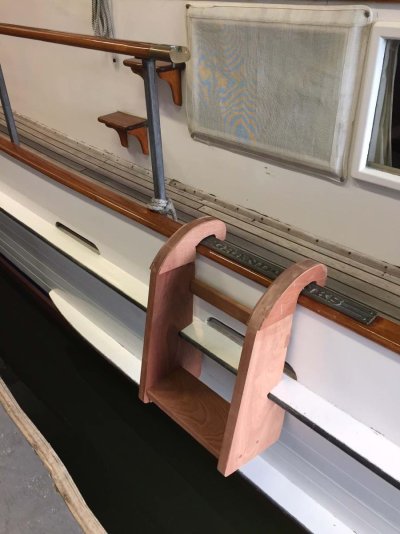I cut the sides from 11.5 in x 23 in pieces. The step is 15 in wide, and 9 in deep. I made a pattern by cutting a piece of cardboard with scissors, using duct tape for adjusting small size and shape. The "channel" of the hook section is 2 3/4 in to fit/slide over rail. The "notch" below the step is the same height as the "hook" to clear the rub rail. The dimension from the radius that rests on rub rail and the hook that sits on gunwale rail is about 10 in....this dimension is critical..you want the weight to be carried by both surfaces..this requires "custom fitting"...port and starboard are slightly different.
The "feet" below the rub rail are to share the torque with the hook. They too will have to be fitted by making adjustments after assembly.
This design places stress on rub rail and gunwale that boat designer probably did not consider, so I tried to minimize forces by spreading loads onto more than one surface. I also over designed for strength as I figured wood kinda weakens over time when subjected to sun and rain. All of the joints where attached with screws and epoxy. I added strength for step by routering channels in the sides.
Mahogany is probably almost twice as strong as pine so 1 1/4 should be OK..just a bit harder to "machine" to make those "fitting" adjustments. (I used a knife to carve or whittle when fitting.)
We moved to a condo and I gave away most of my sophisticated woodworking tools. My tools were a hand held jig saw, a circular saw, a sharp hand saw, a router, a sharp knife, 4 in grinder, a Dremel die grinder, and an orbital sander..my work bench was the tailgate of my pickup.


